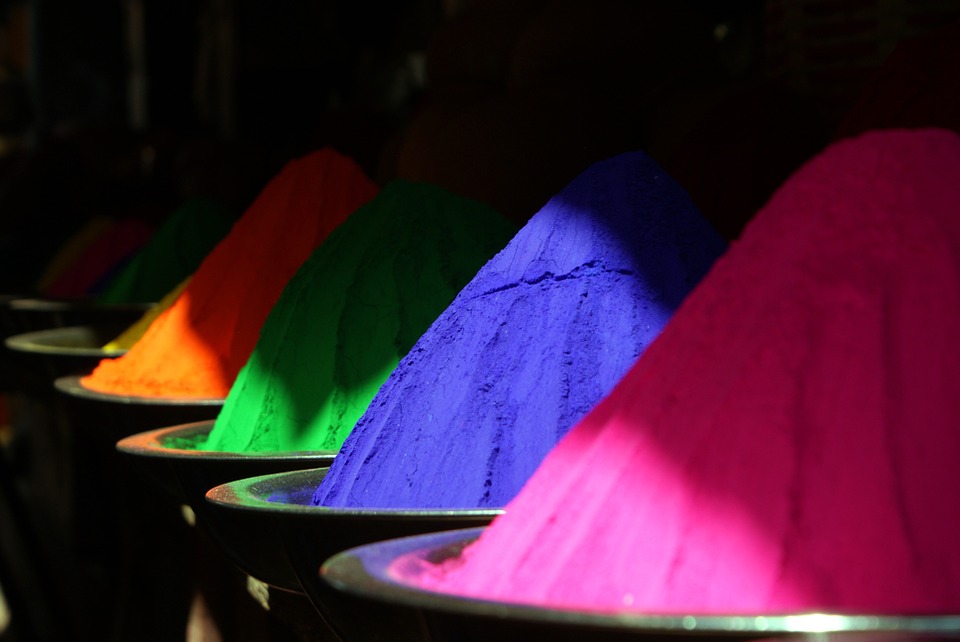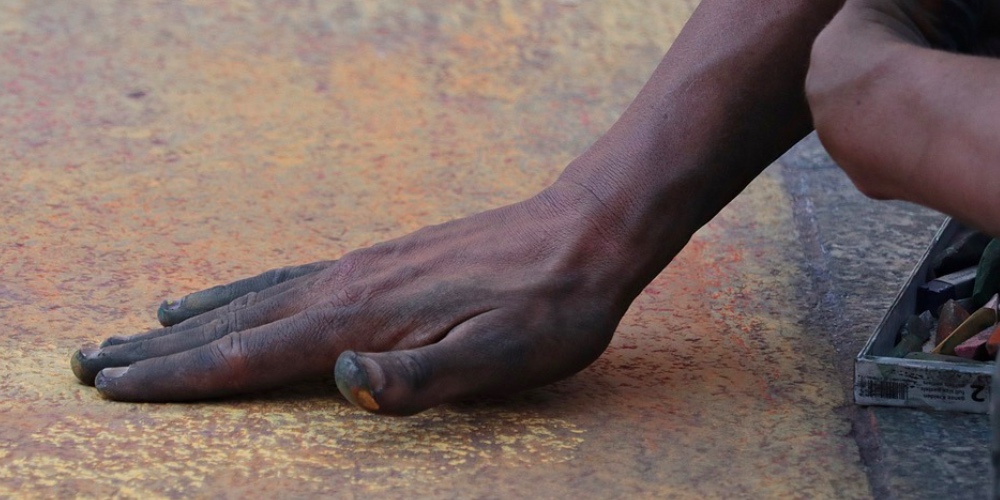Indian Kolams – Discover A different Type of Street Art
Indian kolams are a ritual art form painted in front of the entrances of buildings in southeastern India, Tamil Nadu. In Tamil the word “kolam” means “beauty”, being a symbol of kindness and divinity.
Kolams are traditionally mostly made from rice flour, or finely ground rice powder – which is called “kola-podi” in Tamil. Colored powders are made with mineral and vegetable dyes. Today, to reduce cost, also stone powder is mixed into the rice flour.

How Indian Kolams Are Made
It is believed that drawings should be made every day early in the morning before sunrise, as Brahma and all other deities descend to earth. Kolam patterns are drawn on a carefully swept and cleaned surface. Each drawing is based on a grid of dots – which varies depending on the size of the drawing. Once the dots are placed with a pinch of flour held between thumb and indexfinger, they are connected with straight or curved lines. This process requires concentration, memory, and very precise hand and body movements.
Every day more and more drawings are placed in front of the entrances. The knowledge of Indian kolam patterns is passed down from generation to generation by women performing their daily ritual with their child. At first glance, the process may seem fairly simple, but it takes years of practice to master complex patterns and scattering techniques.
[youtube v=”diC2fnMfj_M”]
The Symbolism of Indian Kolams
However, the main purpose of kolam patterns is not just to decorate the streets. The geometric symmetry of the drawings exemplifies precision and understanding of the complex, cohesive existence of human beings.
Since the drawings were originally made of rice flour, the ants did not have to walk too far or too long to get food and the rice powder also invited birds and other tiny creatures for a meal. With this gesture, the painters of the Indian kolams accept other beings into their homes as well – they show daily respect for harmonious coexistence. So the kolam pattern is a sign of an invitation to welcome everyone into our home, among them Lakshmi, the goddess of prosperity and wealth.
The lines of the patterns move between the points so that they always form closed shapes. Tradition requires that the dot matrix be filled in a way that symbolically prevents evil spirits from entering the the forms and thus preventing them from entering the house.
Besides geometrical patterns, Indian kolams may also include images of fish, birds, and other animals that symbolize the unity of man and beast. Additionally the sun, the moon, and other zodiacal symbols can be used. A downward triangle represents a woman, an upward triangle representes a man. A circle symbolizes nature, a square symbolizes culture, and a lotus symbolizes the womb.
Now grab a handful of flour and try making some Indian street art at home as well! Or maybe you are lucky enough to see an Indian kolam in one of the best yoga studios in Budapest!
For more yoga and conscious lifestyle news follow us on Facebook.
 English
English magyar
magyar